Blog - EXPERTISE & INNOVATIONS - Solid State Relays - Optional Module ECOM
ECOM0010 combined with our SU/SUL is a compact solution providing a communication interface, a current monitoring and a PID temperature controller.
The ECOM is the most compact solution available on the market that incorporates the latest measuring and control technology.
By reducing wiring costs and minimizing the size of electrical cabinets, this solution is the answer to your needs.
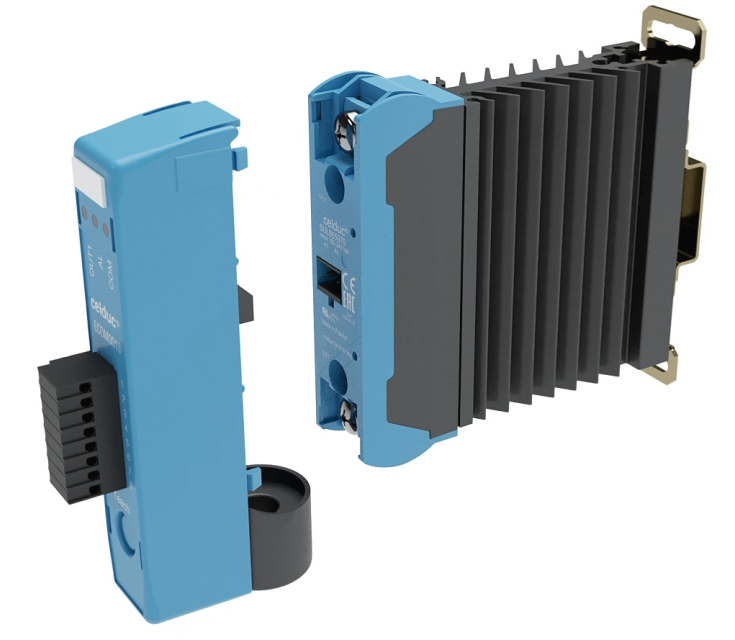
Here are the main features of our Optional Module ECOM :
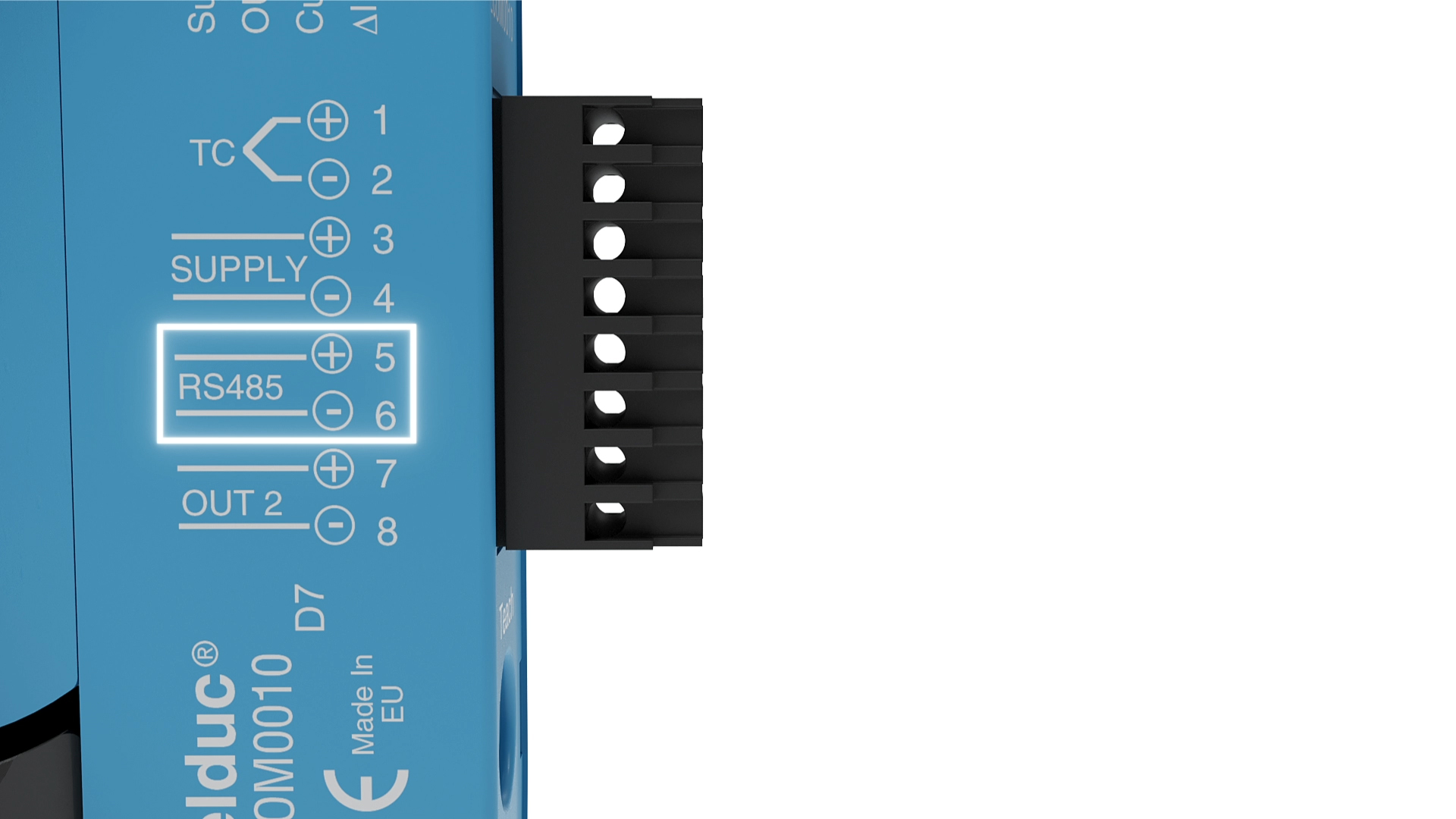
Our ECOM allows a Real-time monitoring via an RS485 link and MODBUS RTU protocol.
Modbus RTU is an open serial protocol derived from the Master/Slave architecture originally developed by Modicon (now Schneider Electric). It is a widely accepted serial level protocol due to its ease of use and reliability. Modbus RTU is widely used within Building Management Systems (BMS) and Industrial Automation Systems (IAS).
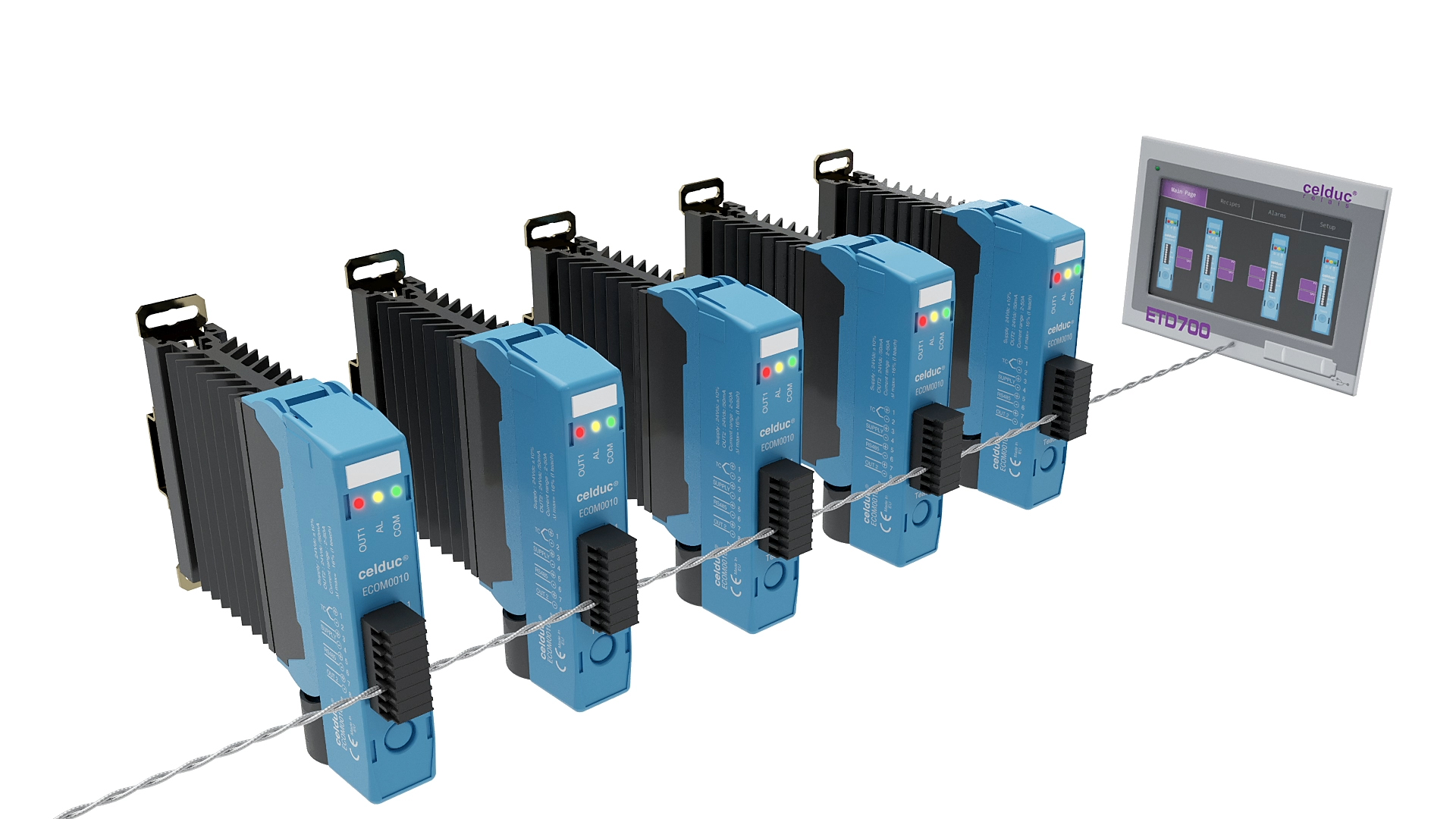
A Direct control is possible by HMI or PLC with MODBUS RTU protocol.
Other communication protocols are possible (e.g. Ethernet IP, Ethercat, Profinet…) through a Modbus RTU converter Gateway.
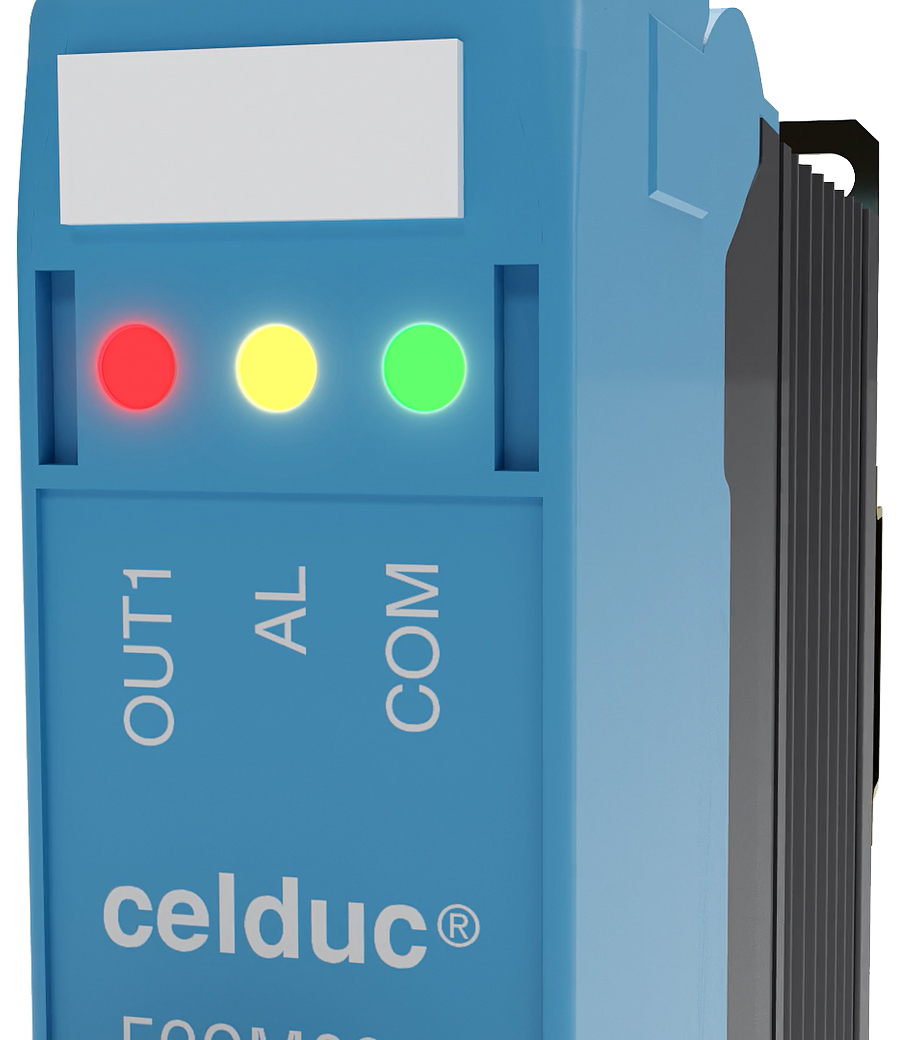
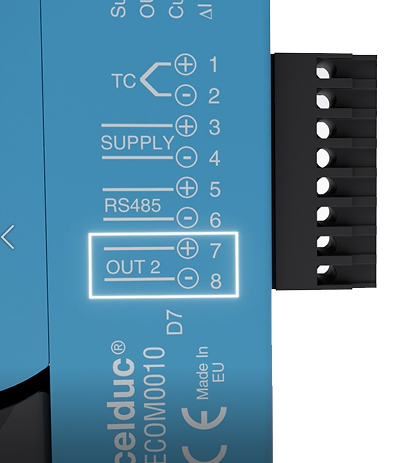

Pulse width modulation (PWM) is a great method of controlling the amount of power delivered to a load without dissipating any wasted power.
The duty cycle and cycle time can be set-up via the communication interface.
Logic outputs OUT1 and OUT2 can be used to control another Solid State Relay.
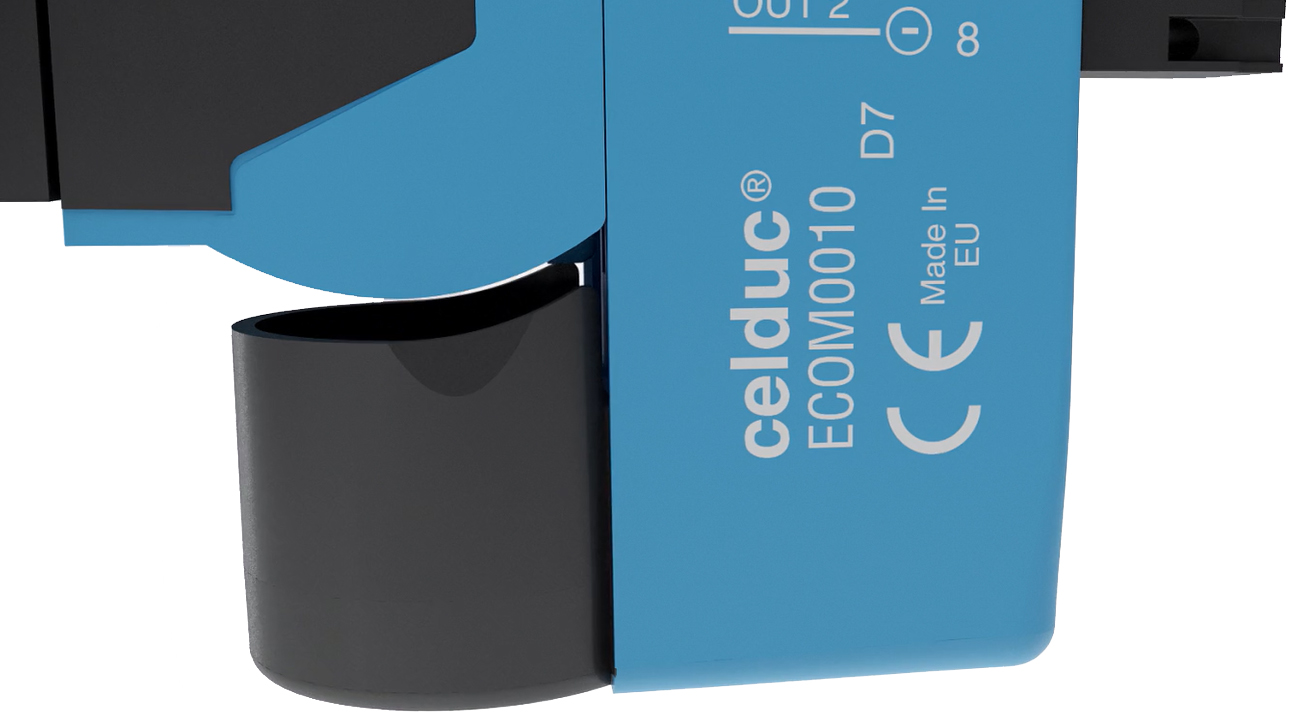
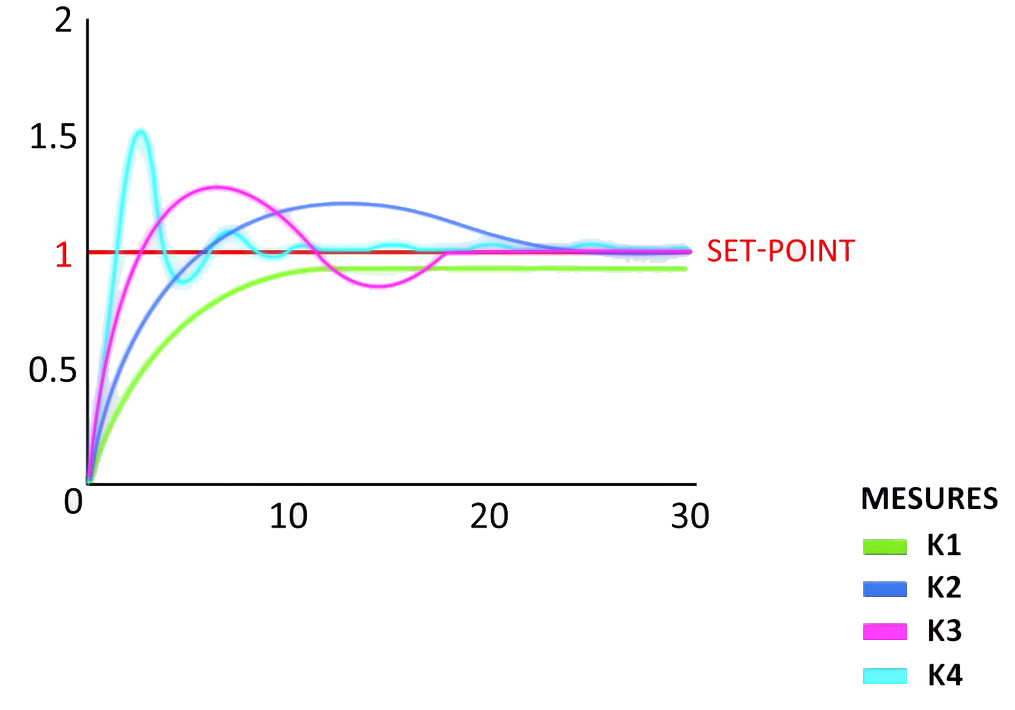
• The thermocouple is a simple, widely used component for measuring temperature. An Insulated input is available for thermocouples type J, K, T, E.
• Logic outputs OUT1 and OUT2 of the ECOM module can be used for heating and cooling.
• PID with automatic or manual tuning :
Automatic tuning will always be active and will constantly analyse the difference setpoint-process (error). If this difference is greater than the value selected on parameter 7 (Max Gap Tune), the ECOM will decide when and how to modify PID parameters.
The manual procedure allows the user a greater !exibility on deciding when to update PID algorithm parameters.